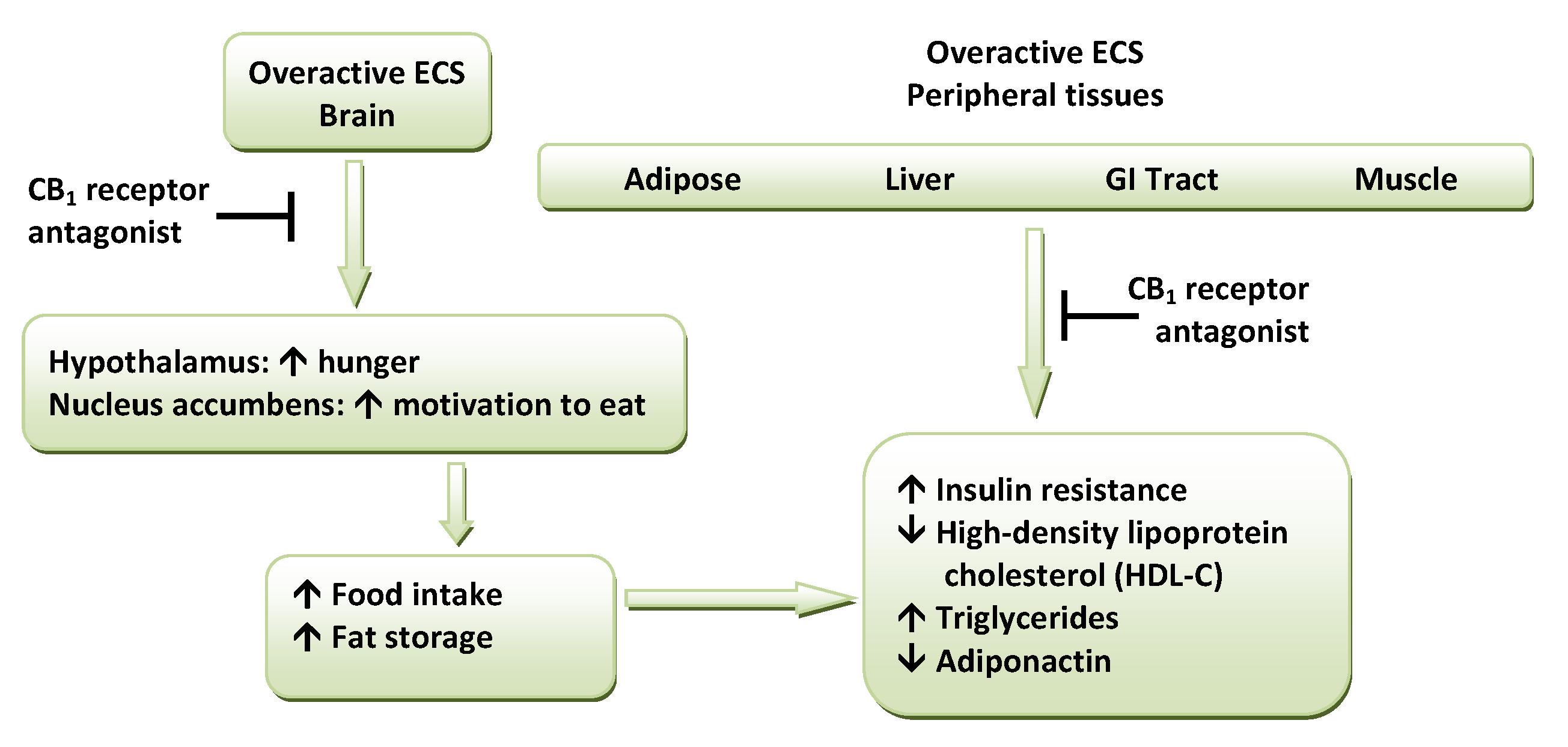The Endogenous Cannabinoid System (ECS)
For medical marijuana to be so useful, your body must have a well-oiled system in place for it to act on, which is the ECS. This system is composed of your body’s cannabinoid receptor proteins, that are expressed throughout your central and peripheral nervous systems, and the endocannabinoids, which are lipid-based neurotransmitters. When the endocannabinoids bind to the cannabinoid receptors (which are G-protein coupled receptors) CB1 or CB2, calcium channels are blocked and the ERK and p38 pathways are activated.
The two main endocannabinoids are 2-arachidonoylglycerol (2-AG) and anandamide (AEA). 2-AG is synthesized from phosphoinositol, while AEA begins with phosphatidylethanolamine. Each synthesis requires its specific enzymes to cleave these membrane proteins into the endocannabinoids.


Effects in the Body
Medicinal marijuana effects include:
- Pain relief
- Cell apoptosis (death) – This is anti-cancer
- Stress relief
- Seizure treatment
Endocannabinoids are able to do these same things through binding to their CB1 or CB2 receptors, but CB1 is the most common receptor. The modulation done by endocannabinoids can increase appetite, directly cause cell apoptosis, can be anti-inflammatory, and can be inhibitory by keeping the cell signaling at appropriate levels.

Medical Marijuana Treatments
Medical marijuana is now legal in 29 states, as well as Washington D.C.
There are also 18 states that have specifically legalized medical cannabidiol (CBD), a non-psychoactive extract of marijuana.
Medical marijuana is used to treat:
- Terminal illness
- Glaucoma
- PTSD
- Seizures, including those characteristic of epilepsy
- Human Immunodeficiency Virus (HIV)
- Acquired Immune Deficiency Syndrome (AIDS)
- Tourette’s Syndrome
- Amyotrophic Lateral Sclerosis (ALS)
- Cancer, if the underlying condition or treatment produces one or more of the following:
- severe or chronic pain
- nausea or severe vomiting or
- cachexia or severe wasting
- Severe and persistent muscle spasms, including those characteristic of multiple sclerosis (MS)
- Inflammatory bowel disease
- Fibromyalgia
- Intractable pain
There is still much research needed to fully understand the ECS, as well as the benefits and dangers of medical and recreational marijuana, but much progress has been made in the last 10 years to this understanding.
